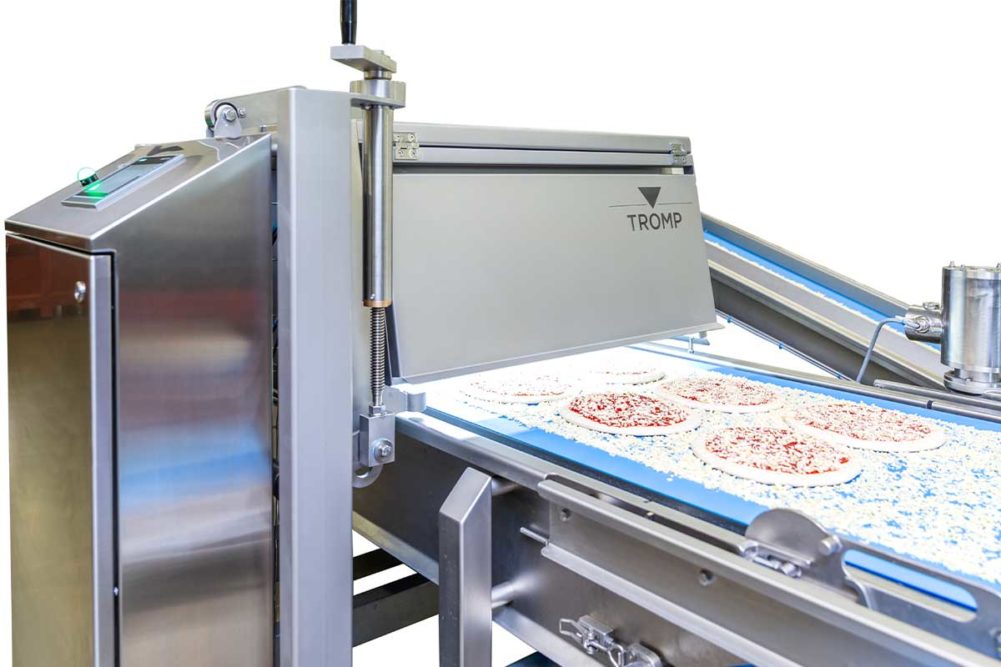Traditional bread bakers expanding into the pizza market quickly recognize that the mixing process is distinctly different from making buns, rolls and other products.
In fact, several factors make them unique.
First, pizza dough requires various ingredients such as additional fat, baking agents, gluten or improvers not present in other dough types, noted Shawn Hasley, director of food system sales and services, Zeppelin Systems USA, which provides continuous mixers.
Second, the ingredients must be homogeneously distributed to create a soft, homogenous, yet firm structure. With frozen pizza, he added, the dough temperature must be controlled throughout the process, with no deviations allowed to avoid significant variations in the dough structure over time.
Moreover, the hydration of pizza dough is lower than other bread products, said Jim Warren, vice president of Exact Mixing, Reading Bakery Systems, a provider of continuous mixers. As a result, the less water in the dough, the lower the energy required to mix that product.
Because of this, the pizza dough is not as developed as for bread or buns, said Terry Bartsch, executive product manager, AMF Fusion, an AMF Bakery Systems brand.
In a horizontal mixer, he said, mixing times can be 15 to 18 minutes to develop a bread dough compared with 5 to 7 minutes for a pizza dough.
For sheeted pizza crust, the scrap dough produced by the sheeting process will be worked back into the dough at the mixer or and the beginning of the sheeting process.
Another key to mixing pizza dough involves achieving a balance between elasticity for proper rising and extensibility for shaping, noted Nicolas Paugam, technologist, VMI.
“This balance involves a compromise between formulation, mixing and resting time,” he said. “The dough should be kneaded well, but not excessively.”
Various styles of crust require product-specific processes, whether it’s for traditional frozen pizza or fresh for foodservice.
Processing also varies for a cracker-like, super-crisp crust, a focaccia-style product or even an Italian pinsa pizza.
For instance, Paugam said, one difference between a thin and airy or thick crust lies in fermentation, which allows for an airier, developed and alveolated crust.
“The dough ferments in cold storage for at least 24 to 48 hours,” he explained. “When shaping the dough, it's crucial to handle it gently to avoid degassing the edges. Subsequently, the pizza is baked at very high temperatures to achieve rapid soufflé-like expansion.”
For Detroit-style pizza, he added, a regular pizza dough can be used as a base, but what sets it apart is the makeup and baking process. The dough is pressed into a well-oiled pan and baked, creating its distinctive thick and crispy crust that the Motor City made popular.
For other types of doughs, Paugam pointed out the main change is in the formulation. For pinsa, rice flour is introduced alongside wheat flour, affecting both mixing and baking characteristics.
“The same goes when you add vegetables powders,” he observed. “You might want to par-bake the dough before adding your toppings as well.”
Additionally, he said, olive oil is often added to traditional, Italian-style pizza dough for flavor and texture.
Creating gluten-free and other better-for-you crusts poses different mixing challenges.
“As you get away from flour and move into these other ingredients, they don’t hydrate as rapidly or as evenly,” Warren said. “You make a pizza crust out of flour, and the flour is primarily dry and hydrates at a given rate. When you move into gluten-free, you’re adding starches and gums and other ingredients that hydrate at different rates. As a result, mixing becomes more of a challenge because you want to make sure all the different dry ingredients get the same amount of water that they require. But some dry ingredients like starches absorb water much faster than whatever your grain-based flour does.”
Another quandary involves obtaining the proper distribution of moisture with various ingredients in a continuous mixer.
“You have to understand what products you’re making and make sure the mixer is designed for those types of products,” Warren said. “Can you make all those different products in one mixer? Probably, but some you’re going to make at a much lower throughput than the others because the mixing requirements are going to be so different.”
With a horizonal mixer, Bartsch said, gluten-free pizza doughs require a different agitator than flour-based doughs.
“You’re really not developing the dough,” he explained. “You’re incorporating the ingredients because gluten-free products are made with a rice or tapioca base, not flour.”
Bartsch recommended stealing a page out of cookie and cracker processing and using a single sigma arm mixer for mixing a gluten-free, cauliflower or plant-based pizza dough.
“You’re really just bringing your ingredients together,” he said. “There’s no development of the gluten structure.”
This article is an excerpt from the November 2023 issue of Baking & Snack. To read the entire feature on Pizza Processing, click here.





